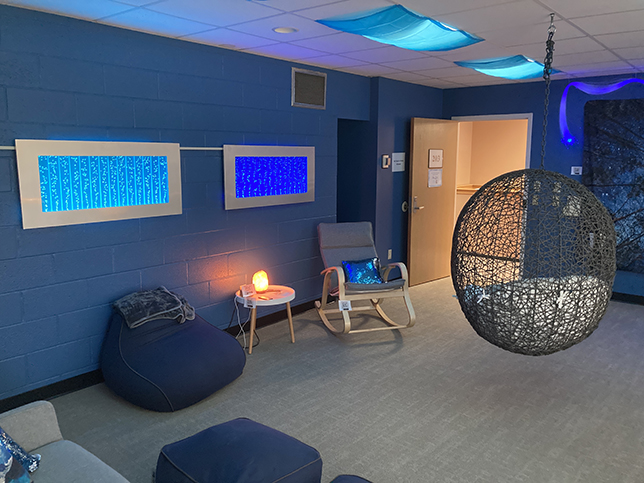Saint Francis University Debuts Sensory Room
Saint Francis University in Loretto, Penn., recently debuted a sensory room as space for students with neurodiverse sensory needs. A news release calls Saint Francis one of a “handful of universities” in the U.S. with a specifically dedicated such space.

Photo courtesy of Saint Francis University
The room is located in the campus library and includes a variety of equipment and activities—along with instructions and information regarding their benefits—for all aspects of the student population’s sensory needs. Between classrooms, residence halls, dining halls, shared bathrooms and more, a university environment may overwhelm students’ eyes, ears, noses and general sense of wellbeing. Added to potential mental health issues related to being away from home for the first time (not to mention the backdrop of the pandemic), the space is intended to be a soothing, calming environment.
The effort was spearheaded by four fifth-year graduate occupational therapy students as a project for their “Role Emerging Level II Fieldwork Experience” on campus. Working with the university, Centers for Academic Success, the Occupational Therapy Department and the library, the students said that they noticed a student need and planned the sensory room as a problem-solving solution.
About the Author
Matt Jones is senior editor of Spaces4Learning. He can be reached at [email protected].